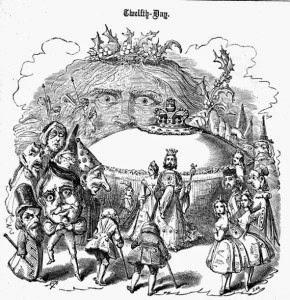
A Twelfth Cake with crown from Robert Chambers, The Book of Days, London, 1869.
Dodici erano i giorni di festa che comprendeva il periodo natalizio nell'epoca Georgiana e Regency fino al periodo Vittoriano, esattamente dalla sera della Vigilia di Natale a quella del 5 gennaio, quando la tradizione cristiana vuole che si commemori l'Epifania ovvero l'arrivo dei Magi a Betlemme, presso la capanna che vide la nascita del Salvatore, recando in dono oro, incenso e mirra.
L'usanza di offrire tali doni il giorno dell'Epifania rimase comune per molti secoli, tanto che nel 1756, sul The Gentleman's Magazine si legge: “Sua Maestà, seguito dai principali ufficiali di corte ... si è recato alla Royal Chapel in St.James' per offrire oro, mirra ed incenso”.
E' facile trovare quindi una giustificazione religiosa alla presenza di re e regine per le celebrazioni popolari, del tutto profane, di questa magica notte che vedeva il culmine dei dodici giorni di grandi festeggiamenti, di cene e di balli
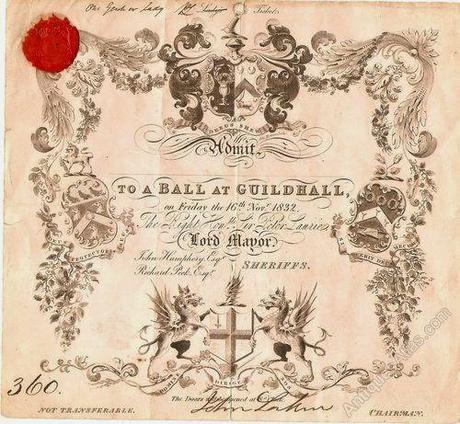
Invito per un ballo al Guilhall di Londra, risalente al1832
con quello più divertente e più entusiasmante in assoluto in cui mistero, gioco e tradizione trovavano spazio in una delle celebrazioni più suggestive dell'intero anno, quella della Dodicesima Notte, Twelfth Night, appunto, che trae origini dall'antico Medio Evo e che William Shakespeare rese famosa immortalandola nella sua commedia in cinque atti scritta tra il 1599 e il 1601.
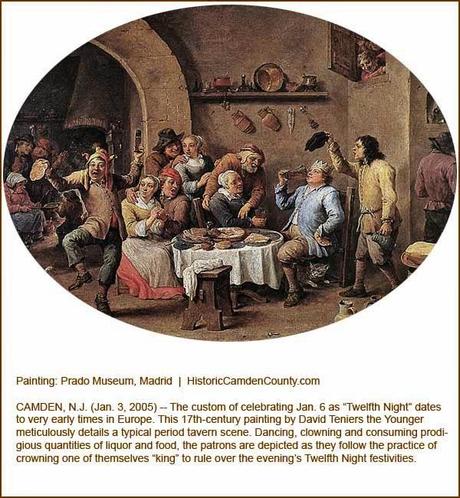
Le decorazioni natalizie, messe la notte della Vigilia di Natale, dovevano essere rimosse e bruciate nel camino entro la mezzanotte, altrimenti l'intera la famiglia sarebbe potuta incorrere in un nuovo anno all'insegna della sfortuna; vi era persino ci credeva che per ogni tralcio rimasto sarebbe apparso un folletto !
E questa notte si sarebbe guardato il mondo a testa in giù !
Trae origini dal periodo Tudor ( tardo medio evo ) la tradizione che vuole che protagonista della dodicesima notte sia il dolce, il Twelfth Cake
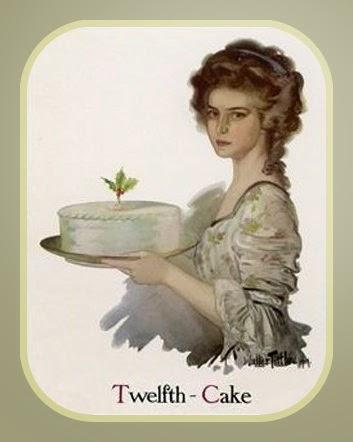
in quale l'usanza popolare voleva che fosse nascosto in una metà un fagiolo e nell'altra metà un pisello secco: ad ogni invitato veniva offerta una fetta di torta prima che la festa cominciasse e così l'uomo che trovava il fagiolo nella sua fetta veniva eletto re per tutta la notte e la dama che trovava il pisello, della festa diveniva la Regina. Anche se si fosse trattato di comuni servi, la loro posizione temporaneamente esaltata veniva riconosciuta da tutti, anche dai loro padroni.
Il dolce dell'Epifania, in Italiano potremmo definirlo così, aveva una base semplice, quella del plum cake, una sorta di pan di spagna soffice, a cui venivano aggiunti spezie ( zenzero, cannella, noce moscata, chiodi di garofano ), mandorle ed agrumi canditi a commemorare i luoghi di provenienza dei Magi, ovvero l'Oriente e l'Africa; all'inizio del XIX°secolo la torta, sempre più elaborata, si arricchì con glassa di zucchero e passamanerie dorate di carta, divenne spesso decorata con delicate figurine di gesso di Parigi, di pasta di zucchero o di mandorle.
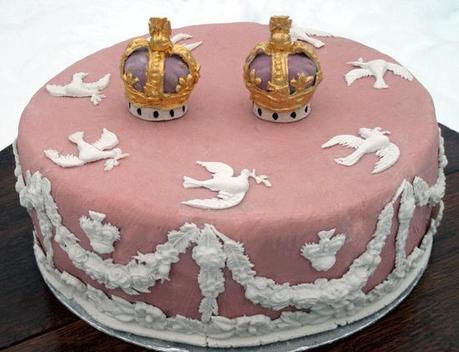
Il re e la regina era affiancati da una vasta serie di personaggi tratti dalla letteratura popolare o dai giochi, quali Sir Gregory Goose, Sir Tumbelly Clumsy, Miss Fanny Fanciful e Mrs Candour, ognuno dei quali doveva recitare alcune parole rituali quando si presentava con la propria maschera, che generalmente veniva decisa dalla padrona di casa ( molto spesso gli inviti erano già fatti in forma tale da presentare all'invitato che lo riceveva il personaggio che gli era stato assegnato e perciò la maschera che avrebbe dovuto procurarsi per l'occasione ).
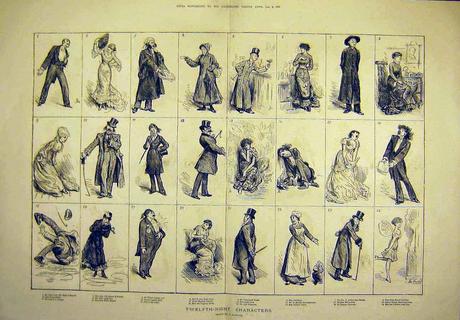
Stampa ottocentesca che reca raffigurati i personaggi della dodicesima notte
Anche se le celebrazioni della dodicesima notte spesso si tenevano in famiglia coinvolgendo anche i bambini,
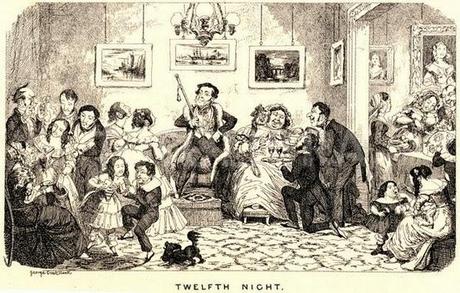
Twelfth Night, George Cruikshank, London, 1845
assumevano facilmente caratteristiche riottose di conseguenza ai pounches fortemente alcolici che venivano assunti ed ecco perché nel timore di non riuscire a mantenerne il controllo, nel 1870 la Regina Victoria dichiarò tali festeggiamenti illegali e perciò con il periodo tardo vittoriano si giunse a festeggiare solamente il giorno del 25 dicembre, quello del S.Natale che da allora si caricherà ancor più di significati e di valori, soprattutto etico-religiosi.
Ma quanto è affascinante scoprire tradizioni così lontane da noi, da tempo cadute in disuso !
Nella speranza di avervi ancora una volta coinvolto in questi miei piccoli viaggi nel tempo rinnovo gli auguri per il Nuovo Anno e sentitamente vi ringrazio.
A presto ♥
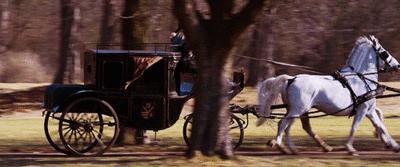

Bibliografia:
Mary Balogh, Jo Beverley, Sandra Heath, Laura Matthews, Edith Layton, A Regency Christmas VII, Mass Market Paperback, 1995
Maria Hubert, Jane Austen's Christmas, Sutton Publishing, 1996

- picture 1- A Twelfth Cake with crown from Robert Chambers, The Book of Days, London, 1869.
Twelve were the days of celebration which were included into the Christmas period in the Georgian and Regency eras until the Victorian period, exactly from the Christmas Eve to that of January the 5th, when the Christian tradition wants us to commemorate the Epiphany or the arrival of the Magi to Bethlehem, at the hut which saw the birth of the Savior, bringing gold, frankincense and myrrh as gifts.
The custom of offering such gifts on this day was common for many centuries, so much so that in 1756, on The Gentleman's Magazine you may read: “His Majesty, followed by the main court officials ... went to the Royal Chapel in StJames' to offer gold, frankincense and myrrh”.
That's why it's quite easy to find a religious justification to the presence of kings and queens for this day popular celebrations, entirely secular, for the magic of this night that represented the culmination of the twelve days of great festivities, dinners and balls
- picture 2 - Invitation to a Ball at Guilhall, London, dating back to 1832
with the funner and more exciting of them all, in which mystery, game and tradition found their way, into one of the most evocative holiday of the whole year, that of the Twelfth Night, which originates from the ancient Middle Ages and which William Shakespeare made famous depicting it in his homonymus comedy in five acts written between 1599 and 1601.
- picture 3
Christmas decorations, put on Christmas Eve, had to be removed and burned in the fireplace before midnight, otherwise the whole family could have run into a new year banner of bad luck; there was even who believed that for every branch that remained it would have appeared a leprechaun!
And that night they would have looked at the world upside down!
It draws its origins from the Tudor period (late Middle Ages) the tradition that wants the Twelfth Cake as the protagonist of the Twelfth Night,
- picture 4
in which the popular custom wanted it to be hidden in a half of its a bean, and in the other a pea, both dried: to each guest was offered a slice of cake before the party started, and so the man who found the bean in his slice was elected King of the Night and the lady who found the pea, of the party became the Queen. Even if they were common servants, their position temporarily exalted was recognized by all the other guests, even by their masters.
The Cake of Epiphany, in Italian we could name it so, had a simple base, that of the plum cake, a kind of soft sponge cake, to which were added spices (ginger, cinnamon, nutmeg, cloves), almonds and candied citrus to commemorate the places of origin of the Magi, the far East and the Africa; in the early XIXth century the cake, more and more elaborate, became enriched with icing sugar and golden trimmings of paper, even decorated with delicate figures of plaster of Paris, of sugar or almond paste.
- picture 5
The King and the Queen were accompanied by a wide range of characters drawn from the popular literature or from games, such as Sir Gregory Goose, Sir Tumbelly Clumsy, Miss Fanny Fanciful and Mrs. Candour, each of which had to act some ritual words when presented himself with his own mask, which was generally choosen by the mistress of the house (often the invitations were made in the form as to present to the attendee who received it the character that was given him, so that he knew which mask he would have to procure for the occasion).
- picture 6 - Nineteenth century print depicting the characters of the Twelfth Night
Although the celebration of the Twelfth Night took often place in family involving children too,
- picture 7 - Twelfth Night, George Cruikshank, London, 1845
they took easily unruly characteristics accordingly to the strongly alcoholic pounches that were hired, and that's why in the fear of not being able to maintain the control, in 1870 Queen Victoria declared these festivities illegal and therefore with the late Victorian period the came to celebrate only the day of December 25th, that of Christmas and its Eve, that since then will enriche even more in meanings and values, especially of ethical-religious kind.
But how fascinating to discover traditions so distant from us it is, traditions for so long fallen into disuse !
In the hope of having, once again, involved you in these little 'travels in the past' of mine, I renew the good wishes for the New Year and thank you sincerely.
See you soon ♥
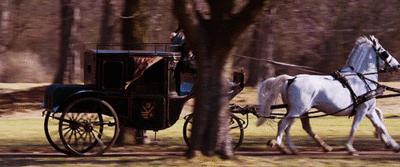

Bibliography:
Mary Balogh, Jo Beverley, Sandra Heath, Laura Matthews, Edith Layton, A Regency Christmas VII, Mass Market Paperback, 1995
Maria Hubert, Jane Austen's Christmas, Sutton Publishing, 1996

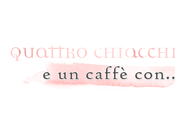

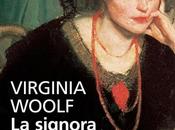
![[Rubrica: Italian Writers Wanted #12]](https://m22.paperblog.com/i/289/2897898/rubrica-italian-writers-wanted-12-L-cIVqIF-175x130.png)



COMMENTI (1)